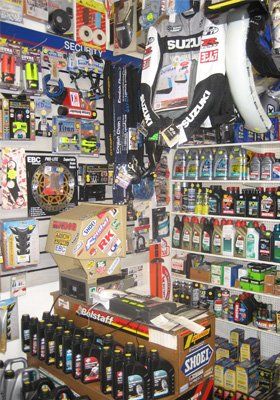Must-Have Motocross Gear: Raise Your Riding Experience Today
Wiki Article
Grasping Bike Gears: Just How to Maximize Your Riding Experience
In the world of motorcycling, grasping the art of gear adjustment is important for improving your riding performance. Correctly understanding and utilizing motorbike gears can substantially impact control, gas, and velocity effectiveness, transforming a typical trip right into a seamless, exhilarating trip. By including exact change timing and adapting gear selection to various road problems, riders can ensure optimum engine efficiency and safety. The nuances of clutch control, throttle coordination, and gear technicians beckon a much deeper exploration, assuring to unlock the full possibility of your device. Just how can these techniques be taken advantage of to truly enhance your riding experience?Comprehending Equipment Mechanics
How do the complexities of gear mechanics influence motorcycle performance? At the core of bike characteristics, equipment auto mechanics play an essential function in converting engine power into activity, inevitably determining speed and control. Gears, carefully crafted elements, allow bikers to optimize torque and rate, making certain a smooth shift through various surfaces and speeds. The gear proportions, meticulously created, identify the relationship in between engine changes and wheel turns, affecting acceleration and gas effectiveness.
Understanding gear technicians starts with acknowledging the value of the gearbox, which houses several equipments of differing sizes. These gears connect through a process recognized as meshing, where teeth of various gears engage to transfer power.
In addition, the principle of gear changing is integral to making the most of efficiency. Timely and smooth shifts guarantee that the engine runs within its optimal power band, preventing unneeded pressure and boosting long life (motorcycle shop). By comprehending these mechanical details, motorcyclists can accomplish an unified mix of effectiveness, control, and power, elevating their riding experience
Timing Your Shifts
Change timing proficiency is essential for optimizing motorcycle performance and enhancing the riding experience. Properly timed changes make certain that the engine runs within its optimum power band, which is critical for keeping control, accomplishing smooth acceleration, and guaranteeing the durability of the motorcycle. Riders must create an instinctive feeling of when to move gears, which entails recognizing the connection between engine changes per min (RPM) and speed.To master change timing, pay attention to the engine's noise and feel, as these give essential hints about when to transform equipments. The optimal shift factor normally happens when the engine approaches the top variety of its power band without getting to the redline. Moving also early can cause a lack of power, while moving too late might cause unnecessary engine stress
Additionally, roadway conditions and riding design influence shift timing. For instance, in metropolitan setups, smoother and a lot more frequent shifts might be required to browse web traffic successfully. In contrast, throughout highway riding, fewer changes at greater speeds can be a lot more appropriate. Practicing in diverse environments will boost your ability to time changes specifically, ultimately raising your riding experience to a specialist level.
Enhancing Fuel Efficiency
While mastering motorbike equipments is vital for performance, improving gas efficiency is equally essential for both financial and environmental reasons. Optimal fuel consumption not only decreases functional expenses but likewise lessens the environmental footprint of riding. To accomplish this, one have to understand the elaborate partnership in between equipment choice and engine performance.To start with, choosing the best gear at appropriate rates can substantially impact fuel consumption. Riding in a higher equipment at reduced rates can lead to engine lugging, which is detrimental to both gas economy and engine health. Alternatively, riding in reduced equipments at broadband leads to unnecessary fuel intake. Hence, keeping an ideal balance by shifting equipments in placement with roadway conditions and anticipated maneuvers is important.
Additionally, normal maintenance plays a critical duty in gas efficiency. Ensuring that the bike is well-tuned, with tidy air filters and correctly blew up tires, can boost aerodynamics and lower gas wastage. Taking on a riding style that welcomes gradual velocity and smooth deceleration can add to better gas economic climate.

Techniques for Smooth Transitions
Accomplishing smooth gear shifts is fundamental to improving the riding experience and ensuring the long life of a motorbike's transmission system. Correct gear shifting not just adds to a seamless adventure however likewise lessens damage on the mechanical parts. To understand the art of smooth transitions, motorcyclists must concentrate on a couple of vital techniques.
Secondly, clutch control plays a critical duty. Involving and disengaging the clutch efficiently requires practice. The clutch lever should be released gradually, enabling a seamless transfer of power from the engine to the wheels without causing a jolt or abrupt movement.

Adjusting to Roadway Conditions
Navigating varied roadway conditions is a vital skill for any kind of motorcyclist intending to preserve control and security. Whether you're riding on wet surfaces, crushed rock roads, or navigating doglegs, your capability to adapt your gear use and riding method is critical. Understanding just how to change your gears suitably can substantially impact traction and stability, making certain a much safer journey.On damp roads, it is advisable to preserve higher equipments to decrease torque and minimize wheel spin. This technique helps keep grip on unsafe surfaces, permitting smoother velocity and deceleration. In comparison, when riding on gravel or irregular terrain, reduced gears are better. Lower equipments supply better control and permit you to respond even more swiftly to unanticipated changes in the roadway surface.
Sharp curves require precise equipment monitoring to balance rate and control. Downshifting prior to entering a contour can aid maintain momentum while making sure the motorcycle stays secure throughout the turn. Consistent method in diverse problems enhances your ability to predict and react to modifications in road structure and slope.
Verdict
Grasping motorbike gears considerably improves the riding he has a good point experience by improving acceleration, gas, and control performance. An extensive understanding of equipment auto mechanics and specific change timing guarantees the engine runs within its optimal power band, while smooth transitions through effective clutch and throttle coordination increase comfort and efficiency. Adjusting gear selection to various road problems, such as making use of greater equipments on damp surfaces and lower gears on crushed rock, more boosts handling and security. Eventually, these skills elevate the overall trip.Recognizing gear mechanics starts with identifying the relevance of the gearbox, which houses numerous equipments of varying dimensions. These equipments interact via a process known as meshing, where teeth of various gears involve to transfer power (mx parts nz). Mild modifications to the throttle during equipment shifts can protect against jerky motions and keep a constant riding pace
Whether you're riding on damp surfaces, gravel roadways, or navigating sharp turns, your ability to adjust your gear use and riding method is paramount. Adjusting equipment selection to different roadway problems, such as using higher equipments on wet surface areas and lower gears on gravel, more enhances handling and security.
Report this wiki page